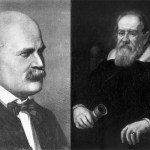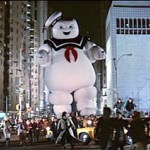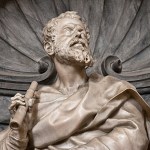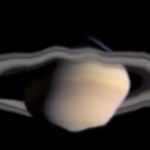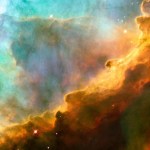Galileo
[Orac note: A combination of power outages, travel to Seattle, and trying to write something for my not-so-super-secret other blog conspired to leave me with nothing for this morning. So I thought I'd resurrect this old gem, which hasn't been reposted in at least four years. I actually did try to remove the dead links (this post dates back nearly 12 years in some form or another), but I probably missed a couple. I also changed the post a little, just to remove clearly outdated stuff. In the mean time, be assured that, with no more travel planned and our power restored, things should get back…
On Life Lines, Dr. Dolittle examines the fascinating parallels between hummingbird and insect flight. He and/or she writes: "The researchers placed nontoxic paint on the wing of a ruby-throated hummingbird at 9 different spots then videotaped the animal flying at 1,000 frames per second with 4 cameras simultaneously." Despite being far removed from insects on the phylogenetic tree, hummingbirds "stir up air around their wings in a way similar to insects like mosquitoes and dragonflies." This is an example of convergent evolution, as natural selection engineers similar solutions for very…
Readers who've been following this blog a while would probably not be surprised to learn that one of my all time favorite movies is Ghostbusters. In fact, it's hard to believe that the movie is now 30 years old. It makes me feel so old, given that I saw the movie in the theater when it came out. Be that as it may, there's a scene near the end of the movie, where an ancient god Gozer the Gozarian, takes the form of a giant Stay Puft Marshmallow Man, tromping through New York City destroying things, all thanks to a stray thought by Ghostbuster Ray Stantz (played by Dan Ackroyd) that inspired…
It's been a frigid winter in much of the United States, but Greg Laden notes that the country covers only 1.5% of the Earth's surface, and overall the planet just experienced the fourth-warmest January on record. Meanwhile global warming denialists are resorting to every rhetorical trick in the book, such as comparing their increasingly outnumbered position to that of Galileo. While it's tempting to recount the history of science as that of a few brilliant mavericks overthrowing established consensus, Greg writes "Science hardly ever gets Galileoed, and even Galileo did not…
Stung by some rather odd language on wikipedia at [[Two New Sciences#Infinite sets]], I'm reading the bits about infinity in "Two New Sciences" (Discourses and Mathematical Demonstrations Relating to Two New Sciences aka Discorsi e dimostrazioni matematiche, intorno à due nuove scienze, 1638) via the translation available at http://galileoandeinstein.physics.virginia.edu/tns_draft/tns_001to061.html. If you look at the oldid of the wiki article, you'll see the familiar problems: that all Galileo's ideas have been translated into the language of modern (set) theory that he likely would…
"All things move and nothing remains still" -- Heraclitus
The history of astronomy can be read as a story of better and better vision. Over the centuries, we have supplemented our vision with technology that allows us to see further and more clearly; while Ancient astronomers, who relied only on their naked eyes to perceive the universe, managed to make star catalogues and predict comets, Galileo, pressing his to a telescope, saw all the way to the moons of Jupiter.
Optical telescopes and the human eye are fundamentally limited; early astronomers were forced to gaze into telescopes for…
By Dr. Paul EstradaPlanetary physicist at the Carl Sagan Center for the Study of Life in the Universe, SETI Institute, and Gail Jacobs
If planets are a dime a dozen, moons are less than a penny each. There are at least 139 moons just within our own solar system. Most of these are the property of the gas giant planets beyond Mars. More than just a nice accompaniment to planets, moons may have habitats in which liquid water could ebb and flow - and possibly be a suitable home for life. Planetary physicist Dr. Paul Estrada investigates how moons around gas giants are formed -- an important…
By Dr. Mark R. Showalter
Planetary Astronomer at the Carl Sagan Center for the Study of Life in the Universe, SETI Institute
In 1609, Galileo introduced to the world his new invention, the astronomical telescope. It opened up new opportunities to explore a territory that all prior generations had regarded as familiar--the night sky. In short order, he was making major discoveries. But the sky is very big and Galileo's telescope was very small. He had to choose his targets carefully.
In that context, Saturn was nothing special, the least of the known planets, just a bright point in a black…
By Dr. Cynthia Phillips
Planetary geologist at the Carl Sagan Center for the Study of Life in the Universe, SETI Institute
Jupiter's moon Europa could be the best place beyond the Earth to search for life. This small moon, about the size of Earth's Moon, is one of the Galilean moons first discovered 400 years ago by Galileo. The Galilean moons were the first objects observed to orbit another planet, and they revolutionized the way our solar system was understood.
Today, the moons of Jupiter are known to be a scientifically rich part of our solar system, and they are yielding a new revolution…
by Nathalie A. Cabrol
I realize how immodest the title of this first blog may sound and it is certainly not my intention to convince anybody that I will answer this question in the limited space allowed here or even in a lifetime. My hope is, instead, to stir thoughts and invite an exchange of diverse perspectives to make this a thread that we can all pull from time to time. It is an immense subject debated in an abundant literature, but discussing it is certainly not the exclusive privilege of those called explorers. All beings, from the greatest minds to the simplest forms of life on this…
